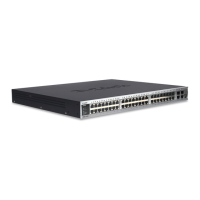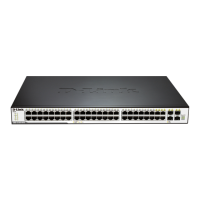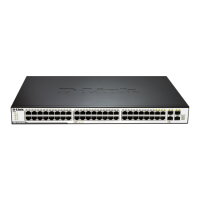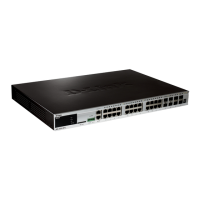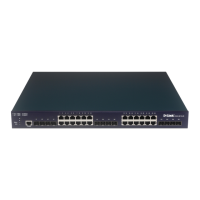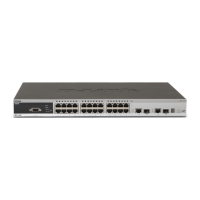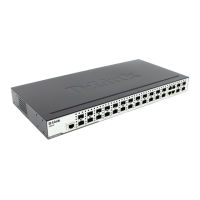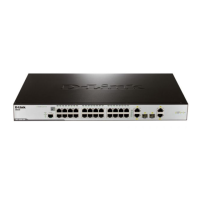xStack
®
DGS-3400 Series Layer 2 Gigabit Ethernet Managed Switch
343
FanFailure
Fan Failure notification. 1.3.6.1.4.1.171.12.11.2.2.3.0.1
FanRecover
Fan Recover notification. 1.3.6.1.4.1.171.12.11.2.2.3.0.2
coldStart
A coldStart trap signifies that the sending
protocol entity is reinitializing itself such
that the agent's configuration or the
protocol entity implementation may be
altered.
1.3.6.1.6.3.1.1.5.1
warmStart
A warmStart trap signifies that the sending
protocol entity is reinitializing itself such
that neither the agent configuration nor the
protocol entity implementation is altered.
1.3.6.1.6.3.1.1.5.2
linkDown
A linkDown trap signifies that the sending
protocol entity recognizes a failure in one of
the communication links represented in the
agent's configuration.
1.3.6.1.6.3.1.1.5.3
linkUp
A linkUp trap signifies that the sending
protocol entity recognizes that one of the
communication links represented in the
agent's configuration has come up.
1.3.6.1.6.3.1.1.5.4
authenticationFailure
An authenticationFailure trap signifies that
the sending protocol entity is the address of
a protocol message that is not properly
authenticated.While implementations of
the SNMP must be capable of generating
this trap, they must also be capable of
suppressing the emission of such traps via
an implementation- specific mechanism.
1.3.6.1.6.3.1.1.5.5
RisingAlarmTrap
The SNMP trap that is generated when an
alarm entry crosses its rising threshold and
generates an event that is configured for
sending SNMP traps.
1.3.6.1.2.1.16.0.1
FallingAlarmTrap
The SNMP trap that is generated when an
alarm entry crosses its falling threshold and
generates an event that is configured for
sending SNMP traps.
1.3.6.1.2.1.16.0.2
newRoot
The newRoot trap indicates that the
sending agent has become the new root of
the Spanning Tree; the trap is sent by a
bridge soon after its election as the new
root, e.g., upon action of the Topology
Change Timer immediately subsequent to
its election. Implementation of this trap is
optional.
1.3.6.1.2.1.17.0.1
topologyChange
A topologyChange trap is sent by a bridge
when any of its configured ports transitions
from the Learning state to the Forwarding
state, or from the Forwarding state to the
Blocking state. The trap is not sent if a
newRoot trap is sent for the same
transition. Implementation of this trap is
optional.
1.3.6.1.2.1.17.0.2
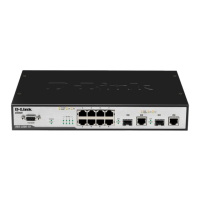
